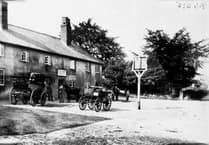The small village of Selborne, with just over a thousand residents, recently celebrated the Nobel Prize-winning achievements of American physicist John Hopkins - joining the legacy of 18th-century local Gilbert White, the famed ‘parson-naturalist’.
But there’s a lesser-known figure in Selborne’s history: Sullivan Black, whose blue plaque on Plestor House opposite White’s Wakes residence marks him as a ‘Libertine, opium-eater, drunkard, duellist, gambler, and wastrel’.
Unlike White, Black has not graced history books, nor does his name echo online. Who was this 18th-century scoundrel?
Wikipedia holds no record, no books recount his life, and even the Encyclopedia Britannica comes up empty. Yet, Gilbert White’s Brewery knows its local legends well, offering a porter brewed in Black’s honor.
Oddly enough, Sullivan Black remains active today - posting on X/Twitter under @SullivanBlack3, where he humorously recalls antics like spiking the vicar’s tea with "hempen cake", writing limericks about butlers and parlour maids, and celebrating his 1720 birthday in dubious company.
With further tales of Parisian liaisons and Rousseau’s rowdy visits, one wonders if Selborne’s notorious resident was erased from history - or simply never existed at all.
Fans of 19th century operettas may quickly find a solution by combining the well-known accomplice of his first name with the antonym of his second.
So was the great naturalist a closet libertine - or is it more likely that the plaque was put up for a bit of a joke?
If you can shed any light on Sullivan and his plaque, drop us an email at [email protected]
As an aside, it’s surprising that no one official index or map of blue plaques exists to help uncover stories like Sullivan Black’s - but if you know of any hidden gems or sites that deserve a plaque, get in touch and we can help map out the uncharted histories on our streets.


